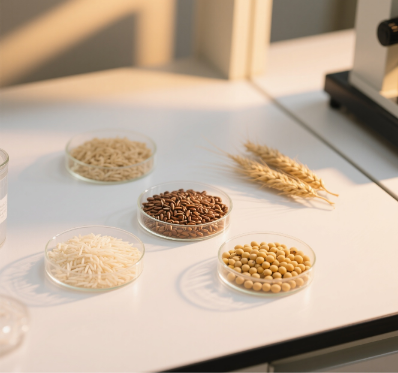China’s seed industry is the world’s second largest behind the United States and plays a pivotal role in global agriculture. With an annual seed usage of approximately 12 million tons and a market value of $19 billion, China’s seed sector is a cornerstone of national food security and an increasingly influential player in international agricultural markets. This article provides an in-depth analysis of the industry, examining its current status, key trends, challenges, and future prospects.
1. Market Size and Crop Segmentation
China’s seed market is characterized by its scale and diversity. The seven major crops—corn, rice, wheat, soybeans, cotton, potatoes, and rapeseed—account for approximately 10 million tons of annual seed usage, valued at $13.5 billion. Hybrid varieties dominate crops like corn and rice, while conventional seeds remain prevalent in wheat and soybeans. Commercialization rates in the industry vary significantly, ranging from 88% for cotton seeds (the highest rate) to 40% for potatoes. This segmentation reflects technological advancements and structural differences across crop types.
2. Production Dynamics and Key Crop Trends
Recent data reveals contrasting trends across key crops. Corn seed production increased by 31% to 1.36 million tons during the 2022/23 season, while prices rose 14% to ¥35.4/kg. This increase was driven by an expanded planting area of 244,000 hectares, a six-year high, and higher production costs. In contrast, hybrid rice seed production increased by a modest 5% to 280,000 tons despite a 22% yield decline caused by adverse weather conditions. Notably, soybean seed production achieved full self-sufficiency, with 880,000 tons produced in 2022/23 to meet domestic demand.
These dynamics highlight China’s success in securing staple crop seed supplies, while also indicating vulnerabilities in yield stability, particularly for rice. Demand hikes driven by mechanization, as seen in hybrid rice, suggest ongoing modernization efforts. For example, the usage of hybrid rice seeds increased from 16.8 kg/ha in 2017 to 18.2 kg/ha in 2021, driven by the expansion of mechanized farming.
3. Industry Structure and Enterprise Landscape
China’s seed industry features a fragmented yet evolving ecosystem. As of 2021, there were over 7,600 licensed enterprises operating across crop segments, with corn and wheat dominating at 1,920 and 1,356 firms, respectively. However, the top five companies control only ~15% of the market, indicating high competition and regional specialization. Gansu province, for example, accounts for 48% of corn seed production, reflecting concentrated regional strengths.
State-backed giants like Syngenta Group China and Longping High-Tech spearhead innovation, while thousands of small- and medium-sized enterprises (SMEs) cater to local markets. This dual structure fosters technological advancement and grassroots adaptability. According to the company’s 2023 report, Longping’s “digital cockpit” AI-driven breeding platform has improved breeding efficiency by 20%.
4. Trade Dynamics: Imports and Exports
China’s seed trade reflects its strengths and dependencies. Although it exports large quantities of hybrid rice seeds, accounting for 76% of total exports, primarily to Pakistan, the Philippines, and Vietnam, it is heavily dependent on imports of high-value vegetable and forage seeds. In 2021/22, vegetable seeds accounted for 78% of the import volume and 80% of the import value. Key suppliers included the United States (28%), Chile (11%), and Denmark (10%). Notably, vegetable seed imports reached 11,500 tons in 2022/23, a 10% increase from the previous year, primarily for tomatoes, broccoli, and carrots.
These import dependencies highlight critical gaps in domestic vegetable seed development. For example, China relies on imports for 15% of its vegetable seeds, particularly for high-value varieties like cherry tomatoes, for which imports account for 60% of total demand. Conversely, China dominates global hybrid rice seed exports, with 2022/23 volumes totaling 22,000 tons, valued at $1.7 billion.
5. Challenges and Future Trajectories
China’s seed industry faces multifaceted challenges.
- Dependency on imports: – Reliance on imports: 15% of vegetable seeds are imported, and the country is only 30% self-sufficient in forage seeds (versus a 70% policy target).
- Yield Gaps: Western hybrids outperform domestic varieties by up to 60%. For example, US corn yields are 12 tons/ha, while China’s are 7.5 tons/ha.
- Technological Lags: Despite progress, the adoption of biotechnology and digital breeding tools requires further advancement.
However, several opportunities are emerging:
- Biotech innovation: Gene-edited crops are expected to be commercialized by 2025, which could potentially boost yields by 15-20%, according to MARA projections.
- Global Expansion: Chinese firms are establishing R&D hubs in South America and Southeast Asia. For instance, Longping invested $50 million in Brazilian corn seed research in 2023.
- Digitalization: AI-driven breeding platforms have reduced development timelines by 30%, accelerating cultivar releases.
6. The Path Forward: Balancing Self-Sufficiency and Innovation
China’s seed strategy hinges on three fronts:
- Sustaining self-sufficiency: Maintaining domestic dominance in rice, wheat, and corn. For instance, the usage of wheat seeds increased by 14% from 2017 to 2021, reaching 214 kg/ha, which supports increased sowing density.
- Mitigating Dependencies: Accelerating vegetable and forage seed research. The government’s “14th Five-Year Plan” (2021–2025) aims to achieve 70% forage seed self-sufficiency by 2025 with $2.3 billion in public investment.
- Embracing Technology: Leveraging biotech and digital tools to close yield gaps. MARA estimates that gene-edited corn could reduce reliance on imported pesticides by 40%.
Conclusion
As climate change and geopolitical shifts transform global food systems, China’s seed industry is at a pivotal point. Although it has made significant strides in achieving self-sufficiency in staple crops and advancing technological innovation, its strategic dependence on high-value seeds poses risks. Future success hinges on balancing domestic capacity building with global integration, leveraging digital tools, and navigating geopolitical complexities. China’s ability to master these dynamics will not only shape its food security, but also its standing as a global agricultural powerhouse.
SOURCES:
- China’s Ministry of Agriculture and Rural Affairs (MARA)
- Syngenta Group China Reports
- – Longping High-Tech Annual Data
- – U.S. Department of Agriculture (USDA) International Seed Trade Statistics









